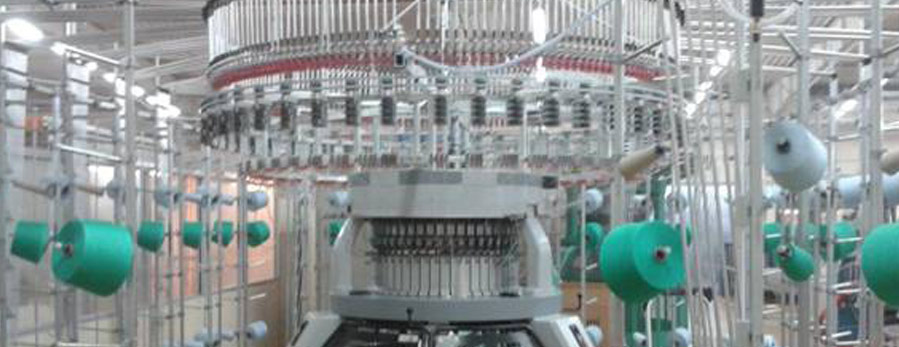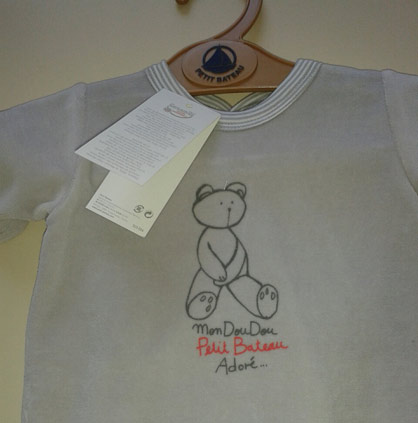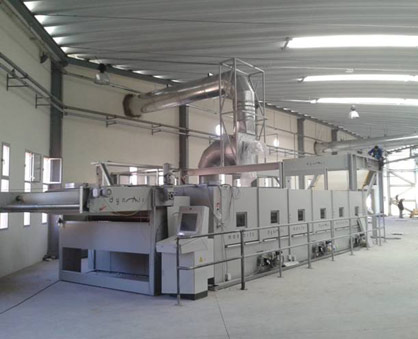Sustainability
Petit Bateau is OEKO-TEX® Company of the Month for May 2014

In France, Petit Bateau has achieved cult status. Whole generations of French peoplehave grown up in romper suits, sleepsuits, underwear and pyjamas with the little boatlogo. No wonder - the traditional label was established back in 1893 in the formerstronghold of knitting, Troyes, as a high-quality supplier of children's clothes. Even atthat time, mothers appreciated the products because their quality stood up to so manytests. And top quality is still a focus at Petit Bateau today: "The quality concept hasbeen essential to us for a long time. One could even call it the DNA of our company",explains Pierre Antoine Perrot, Chief Operating Officer. Following the entry of the YvesRocher group in 1988, Petit Bateau was already making 40 percent of its turnover in themid-2000s abroad. A further turnaround took place when the product range was expandedto include adult fashion, triggered by one particular event. In 1994 it was no less thanKarl Lagerfeld who helped the Petit Bateau brand to achieve new popularity.
The fashiondesigner sent Claudia Schiffer down the catwalk wearing a Petit Bateau shirt under aChanel outfit and thus started a new trend. Overnight, women became used to the ideaof wearing T-shirts in size "14 years". In the following years, the demand for T-shirts forchildren and young people experienced a real boom. "We took advantage of this trendand since then have also offered collections for "adults" - albeit in adult sizes such as S,M, L" outlined Pierre Antoine Perrot.Petit Bateau is primarily concerned with the quality concept. As a result of this principle,the company consistently insists on the vertical integration of all product levels - fromknitting and dying to textile finishing and the manufacture of ready-made clothes. Withits 2800 employees, the company manufactures more than 28 million pieces of clothingeach year at its locations in France, Morocco and Tunisia, mainly using cotton or mixturesof natural fibres. One focus is still the collections for babies and infants. For these youngcitizens of the world there is an extensive range of romper suits, sleepsuits, underwearand nightwear made of molton, terrycloth or velour.

Pic: All articles in the clothing collections for babies and small children are certified according to the OEKO-TEX® Standard 100 and meet the most stringent human-ecological requirements for certification in product class I (baby articles). © Petit Bateau
All articles in this segment arecertified according to the OEKO-TEX® Standard 100 and meet the most stringent humanecologicalrequirements for certification in product class I (baby articles). The range forthis target group also includes child-friendly accessories such as soft toys, rattles, shoesand hats. A special customer service offered by Petit Bateau is the option to personalisetheir products, for example, with the name of its wearer.The trademark of the Petit Bateau collections is a maritime look, often with a stripedpattern in bright colours or on a white background. The company demonstrates itscreativity by cooperating with fashion designers, sometimes with seasonally changingcollections, which are often grouped together under a particular motto, like "Christmas","Vichy checks" or "Red gloss". Pierre Antoine Perrot is convinced about the benefits ofthis cooperation: "We are making the fashion of today - and this includes stylish, fresh andever more surprising collections.
The creative cooperation with Christian Lacroix & Opérade Paris, Carven, Tsumori Chissato and Hervé Tullet can bring us all of this."The success of Petit Bateau in its clear positioning as a quality and brand-awarelabel is primarily due to the well thought-out distribution of its products. With over 400stores around the world, the company is able to present itself at the point of sale with acomprehensive market appearance. In addition, Petit Bateau uses a number of specialistretail partners as suppliers and this is supplemented by a modern web-based shoppingplatform.
Petit Bateau adopts special responsibilities where environmental protection andsustainability are concerned. The company had its first articles in its range certified inaccordance with the specifications of the OEKO-TEX® Standard 100 back in 2000 - inaccordance with the ideals of the Yves Rocher group company. Pierre Antoine Perrot isconvinced that the certifications represent a guarantee for sustainable company success:"Even with clothing and linen that is worn close to the skin, it is almost a must today thatproducts are classified as safe with regard to harmful substances as well as offeringflawless quality." For some time, the company has also been investing in steps to improveits environmental balance.

Pic: With its 2800 employees, Petit Bateau manufactures more than 28 million pieces of clothing each year at its locations in France, Morocco and Tunisia, mainly using cotton or mixtures of natural fibres. © Petit Bateau
This includes, in the first place, comprehensive measures forthe avoidance and/or restriction of harmful substances in production, the observation oflimit values in waste water and exhaust air, as well as an optimised use of energy. As aresult of the installation of modern energy and water-saving systems in different areas,significant energy reductions could be recorded within the company.
With the help ofthe company's own water treatment plant in Troyes, for example, process water can bereused. Pierre Antoine Perrot is sure that the investments represent significant addedvalue both for the company on the one hand and for customers on the other: "During thelast year, we have succeeded in saving half a litre of water in the production of each babybodysuit. This doesn't sound like much but it all adds up to an enormous achievement.Incidentally, we are convinced that products that have been tested for harmful substancesand which are also environmentally friendly are the products of the future. We just have tobe aware of our target group".
